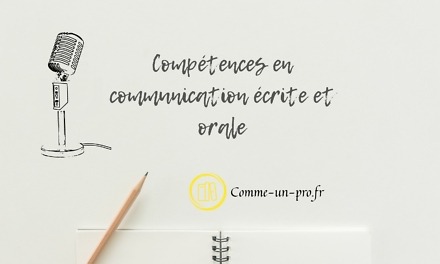Why starting an email well is crucial?
In business, your writing is constantly faced with a major challenge: capturing the reader's attention. Your recipients, overwhelmed managers, must sort through a mass of daily information. Result ? They only give a few precious seconds to each new message.
A weak, dull, poorly delivered introduction... and indifference is guaranteed! Worse, a feeling of weariness which will compromise the full understanding of the message. Suffice it to say, a bitter editorial failure.
Conversely, a successful, impactful introduction will allow you to immediately arouse the interest of your hierarchy or your colleagues. A careful introduction demonstrates your professionalism and your mastery of business communication codes.
The trap to absolutely avoid
Too many business writers make the fatal mistake: going into details from the first words. Believing they are doing the right thing, they immediately jump to the heart of the matter. A disgraceful mistake!
This “blah” approach quickly wears out the reader before they even get to the heart of the matter. From the first words, he picks up, put off by this confusing and uninspiring preamble.
Worse, this type of introduction completely lacks consideration for the recipient's issues. It does not highlight the concrete benefits that could be derived from the content of the message.
The 3 magic ingredients of a captivating intro
To succeed in your introductions, the pros recommend a 3-step method, unstoppable for generating the reader's attention and goodwill:
A powerful “hook” to hit the player
Whether it’s a shocking wording, a provocative question or even striking figures… Start with a strong element that appeals and piques the curiosity of your interlocutor.
Clear and direct context
After the initial click, follow up with a simple and direct sentence to lay the foundations of the subject at hand. The reader should immediately understand what is going to be about, without needing to think.
The benefits for the recipient
Last essential moment: explain why this content interests him, what he has to gain directly from it. Your “benefit” arguments are decisive in getting people to engage in reading.
How to arrange these 3 components?
The typical recommended sequence is as follows:
- A shock sentence or catchy question as an opening
- Continue with 2-3 lines of contextualization of the theme
- Conclude with 2-3 lines detailing the benefits for the reader
Naturally, you can adjust the proportions depending on the nature of the message. The hook can be more or less supported, the contextualization part more or less provided.
But stick to this general structure “hook -> context -> benefits”. It constitutes an excellent common thread to introduce the body of your message with impact.
Talking Examples of Impactful Introductions
To better visualize the method, nothing beats a few concrete illustrations. Here are some typical models for successful introductions:
Example email between colleagues:
“A small clarification could save you 25% on your next communications budget... Over the last few weeks, our department has identified a new, particularly profitable sponsorship strategy. By implementing it from the next financial year, you would significantly reduce your expenses while gaining visibility.”
Example of presenting a report to management:
“The latest results confirm that the launch has turned into a real commercial success. In just 2 months, our market share in the office automation sector has jumped by 7 points! In detail, this report analyzes the key factors of this performance, but also the areas to be planned to perpetuate this very promising dynamic.”
By applying these effective recipes, your professional writings will gain impact from the first words. Grab your reader, arouse their interest… and the rest will follow naturally!





